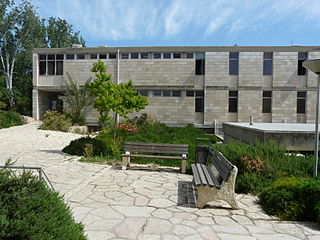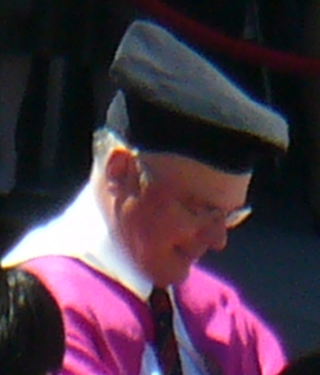Carolyne Van Vliet | |
|---|---|
| Born | December 27, 1929 Dordrecht, Netherlands |
| Died | July 15, 2016 (aged 86) Miami, Florida, US |
| Citizenship | American |
| Alma mater | Vrije Universiteit Amsterdam |
| Awards | Fulbright (1956) |
| Scientific career | |
| Fields | Physicist and electronic engineer |
| Institutions | University of Miami Vrije Universiteit Amsterdam Université de Montréal University of Minnesota Florida International University |
| Doctoral advisor | Gerardus J. Sizoo |
| Other academic advisors | Hendrik Casimir Jan Blok |
Carolyne Marina Van Vliet (1929 – 2016) was a Dutch-American physicist notable for the theory of generation-recombination noise and for the theory of quantum transport in non-equilibrium statistical mechanics, as well as for her many contributions to the foundations of linear response theory. She was a Fellow of the American Physical Society (APS) [1] and of the Institute of Electrical and Electronics Engineers (IEEE). [2] [3]
Van Vliet obtained a BS in physics and mathematics from Vrije Universiteit, Amsterdam in 1949. Van Vliet then obtained an MA in physics from the same university in 1953, and a PhD in 1956 for a thesis titled Current Fluctuations in Semiconductors and Photoconductors, under Gerardus J. Sizoo.[ citation needed ]
As a teenager, Van Vliet lived in the Nazi-occupied Netherlands for 5 years. [4] The name change from "K M van Vliet" to "C M Van Vliet" occurred in 1982. [5] She moved to Minneapolis, Minnesota in 1956, then to Montreal, Quebec in 1969. Starting in 1995 she lived in Miami, Florida. [6]
Van Vliet was a teaching assistant (1949–1953) at the Vrije Universiteit in Amsterdam, and then a NV Philips Research Fellow (1953–1956) at the same university. This was followed by an appointment as a Fulbright Fellow in the electrical engineering department at the University of Minnesota (1956–1957), where she rose to assistant professor. During 1958-1960, Van Vliet was appointed as 'Conservator' in the department of physics at the Vrije Universiteit and then was appointed at the University of Minnesota (1957–1970) rising to professor. In that time, she was an assistant professor (1957–58) and associate professor (1960–65) in the department of electrical engineering and a full professor (1965–70) in the department of physics. In 1969-1995, Van Vliet was professor of theoretical physics at the Centre de Recherches Mathématiques of the Université de Montréal. Then, during 1992-2000, she was a professor at Florida International University in Miami. Her last position was as adjunct professor of physics at the University of Miami. In her career, she actively visited other physics departments over the years which include the University of Utrecht in the Netherlands (1968, 1977) and the University of Florida in Gainesville, FL (1974, 1977, 1978–84).
She was a stellar researcher and teacher who specialized in the areas of non-equilibrium statistical mechanics, fluctuations and stochastic processes, quantum transport in condensed matter and electron behavior in nanoscale quantum devices during her career. [1] These topics are relevant today in exploring the development of quantum computing and its applications. She published over 200 scientific publications and several books included a graduate textbook, "Equilibrium and Non-Equilibrium Statistical Mechanics". She also supervised and graduated over 28 PhD students from 1958 to 2000. [1]
In physics, statistical mechanics is a mathematical framework that applies statistical methods and probability theory to large assemblies of microscopic entities. Sometimes called statistical physics or statistical thermodynamics, its applications include many problems in the fields of physics, biology, chemistry, neuroscience, computer science, information theory and sociology. Its main purpose is to clarify the properties of matter in aggregate, in terms of physical laws governing atomic motion.

The Fermi level of a solid-state body is the thermodynamic work required to add one electron to the body. It is a thermodynamic quantity usually denoted by μ or EF for brevity. The Fermi level does not include the work required to remove the electron from wherever it came from. A precise understanding of the Fermi level—how it relates to electronic band structure in determining electronic properties; how it relates to the voltage and flow of charge in an electronic circuit—is essential to an understanding of solid-state physics.

Viscount Ilya Romanovich Prigogine was a Belgian physical chemist of Russian-Jewish origin, noted for his work on dissipative structures, complex systems, and irreversibility.
Ryogo Kubo was a Japanese mathematical physicist, best known for his works in statistical physics and non-equilibrium statistical mechanics.
Aldert van der Ziel, was a Dutch physicist who studied electronic noise processes in materials such as semiconductors and metals.
Robert B. Griffiths is an American physicist at Carnegie Mellon University. He is the originator of the consistent histories approach to quantum mechanics, which has since been developed by himself, Roland Omnès, Murray Gell-Mann, and James Hartle.

LotharWolfgang Nordheim was a German born Jewish American theoretical physicist. He was a pioneer in the applications of quantum mechanics to solid-state problems, such as thermionic emission, work function of metals, field electron emission, rectification in metal-semiconductor contacts and electrical resistance in metals and alloys. He also worked in the mathematical foundations of quantum mechanics, cosmic rays and in nuclear physics.

Giorgio Parisi is an Italian theoretical physicist, whose research has focused on quantum field theory, statistical mechanics and complex systems. His best known contributions are the QCD evolution equations for parton densities, obtained with Guido Altarelli, known as the Altarelli–Parisi or DGLAP equations, the exact solution of the Sherrington–Kirkpatrick model of spin glasses, the Kardar–Parisi–Zhang equation describing dynamic scaling of growing interfaces, and the study of whirling flocks of birds. He was awarded the 2021 Nobel Prize in Physics jointly with Klaus Hasselmann and Syukuro Manabe for groundbreaking contributions to theory of complex systems, in particular "for the discovery of the interplay of disorder and fluctuations in physical systems from atomic to planetary scales".

Mesoscopic physics is a subdiscipline of condensed matter physics that deals with materials of an intermediate size. These materials range in size between the nanoscale for a quantity of atoms and of materials measuring micrometres. The lower limit can also be defined as being the size of individual atoms. At the microscopic scale are bulk materials. Both mesoscopic and macroscopic objects contain many atoms. Whereas average properties derived from constituent materials describe macroscopic objects, as they usually obey the laws of classical mechanics, a mesoscopic object, by contrast, is affected by thermal fluctuations around the average, and its electronic behavior may require modeling at the level of quantum mechanics.
Kizhakeyil Lukose Sebastian is a professor of chemistry at the department of Inorganic and Physical Chemistry of Indian Institute of Technology, Palakkad, India. Prior to becoming a professor at IIT Palakkad, he was a professor of chemistry at the department of Inorganic and Physical Chemistry at Indian Institute of Science, Bangalore, for about 20 years.
Ann Catrina Coleman is a Scottish electrical engineer and professor at the University of Texas at Dallas specialising in semiconductor lasers.
Peter Hänggi is a theoretical physicist from Switzerland, Professor of Theoretical Physics at the University of Augsburg. He is best known for his original works on Brownian motion and the Brownian motor concept, stochastic resonance and dissipative systems. Other topics include, driven quantum tunneling, such as the discovery of coherent destruction of tunneling (CDT), phononics, relativistic statistical mechanics and the foundations of classical and quantum thermodynamics.
Robert Graham is a German theoretical physicist.

The Racah Institute of Physics is an institute at the Hebrew University of Jerusalem, part of the faculty of Mathematics and Natural Sciences on the Edmund J. Safra Campus in the Givat Ram neighborhood of Jerusalem.
Abhishek Dhar is an Indian physicist specialising in statistical physics and condensed matter physics. He is a professor at the International Centre for Theoretical Sciences, Bangalore.

David A. B. Miller is the W. M. Keck Foundation Professor of Electrical Engineering at Stanford University, where he is also a professor of Applied Physics by courtesy. His research interests include the use of optics in switching, interconnection, communications, computing, and sensing systems, physics and applications of quantum well optics and optoelectronics, and fundamental features and limits for optics and nanophotonics in communications and information processing.
Narendra Kumar was an Indian theoretical physicist and a Homi Bhaba Distinguished Professor of the Department of Atomic Energy at Raman Research Institute. He was also an honorary professor at Jawaharlal Nehru Centre for Advanced Scientific Research.
Arun Mallojirao Jayannavar was an Indian condensed matter physicist and a senior professor at the Institute of Physics, Bhubaneswar. Known for his research on many interdisciplinary areas of condensed matter physics, Jayannavar was an elected fellow of all the three major Indian science academies viz. Indian Academy of Sciences, National Academy of Sciences, India and Indian National Science Academy. The Council of Scientific and Industrial Research, the apex agency of the government of India for scientific research, awarded Jayannavar the Shanti Swarup Bhatnagar Prize for Science and Technology, one of the highest Indian science awards, for his contributions to physical sciences in 1998.
Bruno Leo Zulma Nachtergaele is a Belgian mathematical physicist.
Moumita Das is an Indian-American physicist specializing in soft matter and statistical mechanics research. She is a professor at the Rochester Institute of Technology.